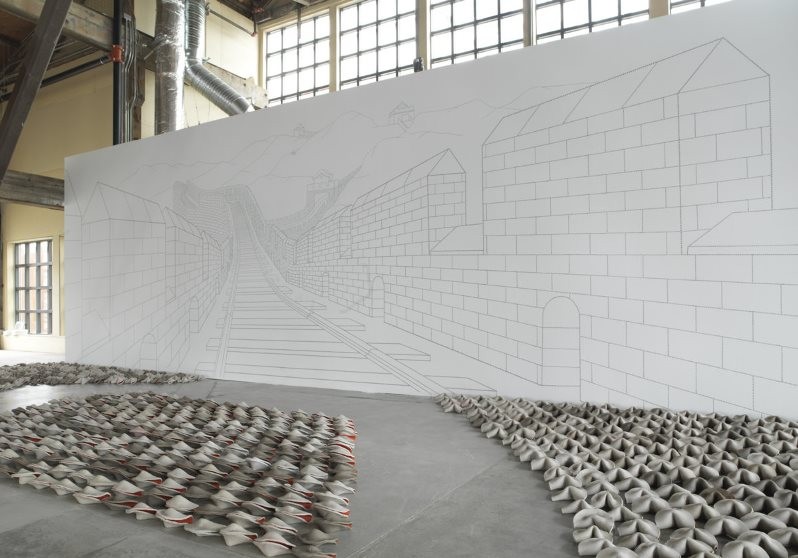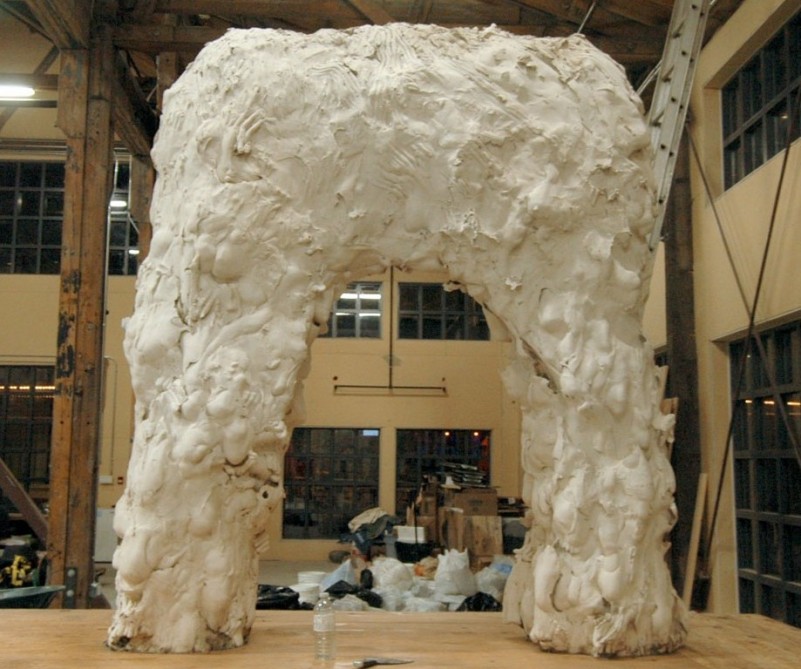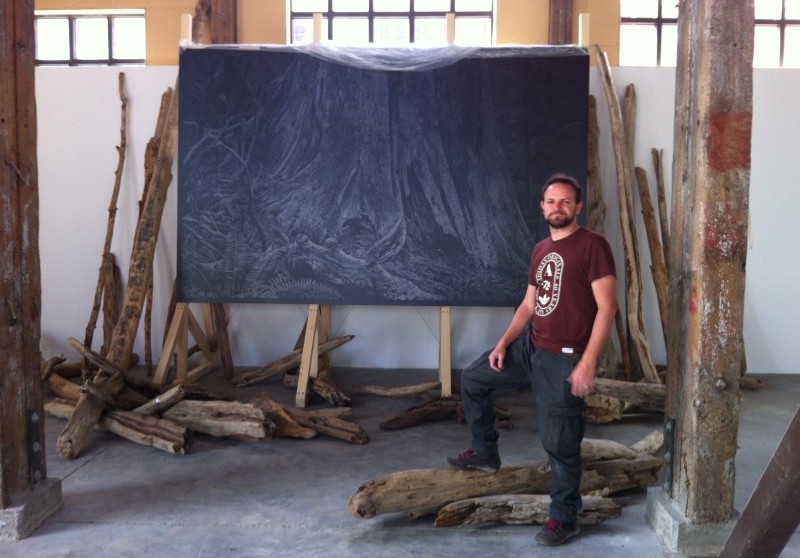Relating Art to the Human Body
Science - Grade 5
This inquiry challenge is intended to be used in connection with the full set of cross-curricular, multigrade inquiry challenges written for the entire Pavilion exhibition. The related unit plans are listed as “Related Material”. This unit of inquiry is not a recipe book but rather a launchpad to inspire new BIG IDEAS. We encourage you to use and/or modify one, or several of the BIG IDEAS below. Adapt it to the grade/ ability level of your students.
Enduring Understanding
Artwork has the power to reflect the stability and instability of culture, economy, government both past and present.
Guiding Questions
In what ways can stigmatism be broken down and perception be changed about a nation? How would you describe the current state of affairs in Brazil? What are the collective voice of the Brazilian contemporary artists? How does the current state of affairs in Brazil relate to life in Vancouver, Canada and the world?
Mind Opening
Choose or devise practices to encourage students to be open to new experiences and ways of thinking in your classroom. For example, the MindUP in-school program.
Discovery and Inspiration:
Launch the Project
• Introduce the Theme: Present the Enduring Understanding and Guiding Questions using vocabulary that is appropriate for your grade level.
• About Vancouver Biennale: Play a short video.
• Create Project Space: Brainstorm ideas to make the project theme visual and visible using bulletin boards, and/or a project corner to share relevant materials and inquiry questions and processes.
Reference Resources:
• Vancouver Biennale 2014-2016 Exhibition Theme: Open Borders / Crossroads Vancouver
• Biennale International Pavilion/Focus on Brazil: for Information about the Pavilion
• Unit Plan Feature Art Installation and Artist: Mas (vasos de vidro branco) Yet (white glass vases) by Mariana Manhães
• Related Unit Plans: Brazil’s Current State of Affairs, Rainfall in Vancouver & Sao Paulo, Borrowing from Indigeneity: Totems, Relating Art to the Written Word, Tension in Canadian History
• Other Pavilion Brazilian Artists: Paulo Climachauska, Nathalia Garcia, Juliana Cerqueira Leite, Marcelo Moscheta, Gisela Motta & Leandro Lima, Raul Mourão, Tulio Pinto, Studio in the City Behind the Scene Making of the Pavilion Video
Learning to Learn:
Art Inquiry
• Ask students to write in their journal and share how would they describe the culture of Brazil before visiting the Pavilion and indicate how did they form these impressions. After the visit, ask the students if their perceptions have changed and if so, in what ways.
• BIG IDEAS Anywhere educators: Experience the Pavilion and its thought provoking Brazilian art anytime here using a 3D Navigator/Viewer – you can walk around the space with your mouse and interact with the art as if you are there! For best virtual art inquiry experience, freely explore the Pavilion and locate Mas (vasos de vidro branco) Yet (white glass vases) by Mariana Manhães for further inquiry challenges. Interact and experience with this installation from different angles using the 3D Navigator/Viewer. Also view the Pavilion Guided Tour Video segment about this artwork (from 5:13 to 5:59 min) MUTE ON.
• Use the Art Inquiry Worksheet (PDF) to guide and capture their ideas and impressions. Customize or create your own Art Inquiry Worksheet as appropriate for your project and class needs.
• Click the Box Below to begin your Pavilion Virtual Exploration via 3D Navigator/Viewer provided by Real Estate Channel (Contact: [email protected])
Shared Insights
• Sharing Art Inquiry Experience: Ask students to share the Art Inquiry Worksheet responses in class.
• View Guided Tour Video: View the Pavilion Guided Tour Video introductory segment and segment about this artwork (from 0 to 1:15, 5:13 to 5:59 min) again with SOUND ON.
• Significant Aspects of the Artist’s Life & Work : Using the following information about Mariana Manhães, teacher creates stations detailing the artist’s life and work. In small groups, students rotate through these stations. Topics might include: (1) education and training; (2) life’s work; (2) materials and processes; (3) beliefs and values. At each station, students answer questions and/or complete tasks. For example, at the station “life’s work” students might plot the artist’s various installations on a map of the world.
• Artist Themes – Communication & Breathing Lungs: Point out Manhães employs electrical elements and animatronic devices to engender a life-like upon the stage of the building. The artist creates an imaginary language to highlight her concern in human communication. Ask the students to reflect on their personal experience on communication issues and how it relates to tensions and whether it affects breathing or other part of the body system. Ask students to briefly comment on how the artist has tried to convey this message through Mas.
Cross-Curricular Inquiry Challenges
Mas/vasos de vidro branco (Mariana Manhães) Inquiry Challenge
• Science/ Physical Education – Lung Capacity: How can Manhães work relate to the human body? How are human lungs similar and different? Students to read the article Just a Bike Race, You Say? Think Again in groups of four. Explain to students that there are several physiological factors that set elite endurance athletes apart from ordinary human beings, including large lung capacity, high VO2 maximum (the volume of oxygen a person can consume during exercise). Though some of these factors require advanced laboratory settings to measure, lung capacity can be easily measured in the classroom. See the lesson plan for measuring lung capacity. How can human lungs be both similar and different? How do the digestive, circulatory and respiratory systems work together in the body? How are these systems affected by exercise? Make a “How It Works” poster showing the structures and functions of the organs in these systems.Web site containing interactives and facts on human anatomy and physiology. Centers for Disease Control’s “Body and Mind”
• Language Arts – Figurative Language & Lungs: How does Manhaes’ installation connect to language and communication? How can we further this connection through Figurative Language? Central to the work is Manhaes’ concern with communication. While the speech sounds familiar, it is in fact an imaginary language, created by the artist. Unlike the physical components of the work, which are exposed to the viewers, the origin of the speech is nebulous, impossible to place. It is this struggle to communicate, pushing at the borders of art and language that affords the work its approximation of life. After an introduction to figurative language, students create their own alliteration, assonance, cliché, hyperbole, idiom, metaphor, onomatopoeia, personification and simile using the term lung(s) uing the links at the bottom of this page.
Reflection
• Teacher and students can reflect on their entire learning process by revisiting the Enduring Understanding and Guiding Questions.
• How did the unit of study open inquiry, create cross–curricular learning opportunities and/or apply learning to real life situations? Has this unit of inquiry changed your opinions, values and world view? In what ways, if any, has it helped you grown as a learner?
Credits
Written by: Stephanie Anderson Redmond, B.A.; B.Ed.; M.Ed.; Ph.D. Student, Department of Curriculum and Pedagogy, UBC
©2014 Vancouver Biennale





